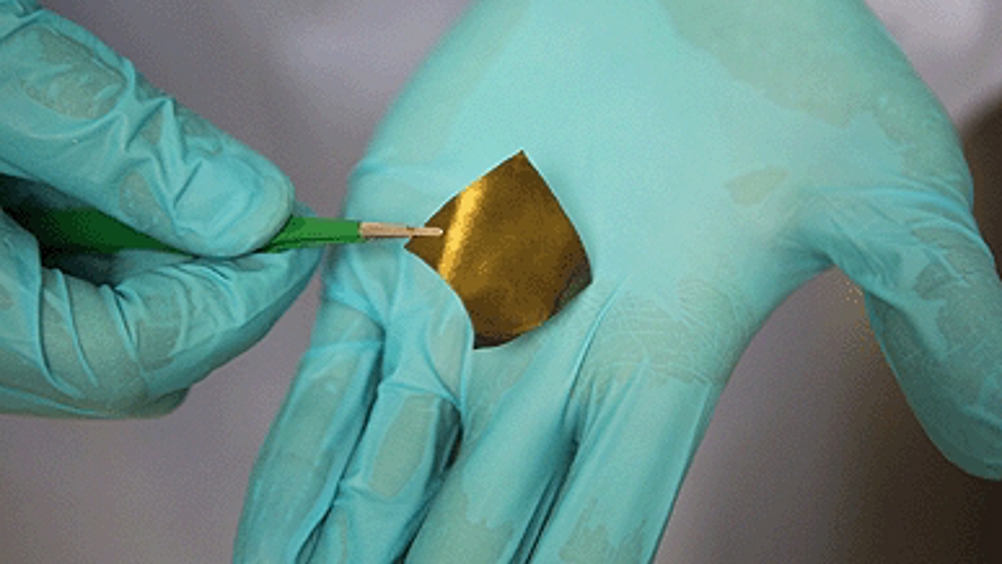Conductivity gain for stretchable electronics
Networks of spherical nanoparticles embedded in elastic materials could make the best bendable conductors, engineering researchers at the University of Michigan claim.

Flexible electronics have the potential to be used in a range of applications including displays that can be stretched or for medical implants that move with the body.
‘Essentially the new nanoparticle materials behave as elastic metals,’ said Nicholas Kotov, the Joseph B. and Florence V. Cejka Professor of Engineering. ‘It’s just the start of a new family of materials that can be made from a large variety of nanoparticles for a wide range of applications.’
Finding good conductors that still work when pulled to twice their length is a goal of researchers who have so far tried wires in zigzag or spring-like patterns, liquid metals, nanowire networks and more. The team found that spherical gold nanoparticles embedded in polyurethane could out compete the best of these in stretchability and concentration of electrons.
‘We found that nanoparticles aligned into chain form when stretching. That can make excellent conducting pathways,’ said Yoonseob Kim, first author of the study to be published in Nature and a graduate student in the Kotov lab in chemical engineering.
Register now to continue reading
Thanks for visiting The Engineer. You’ve now reached your monthly limit of news stories. Register for free to unlock unlimited access to all of our news coverage, as well as premium content including opinion, in-depth features and special reports.
Benefits of registering
-
In-depth insights and coverage of key emerging trends
-
Unrestricted access to special reports throughout the year
-
Daily technology news delivered straight to your inbox










WildFusion helps robot traverse difficult terrain
<a...